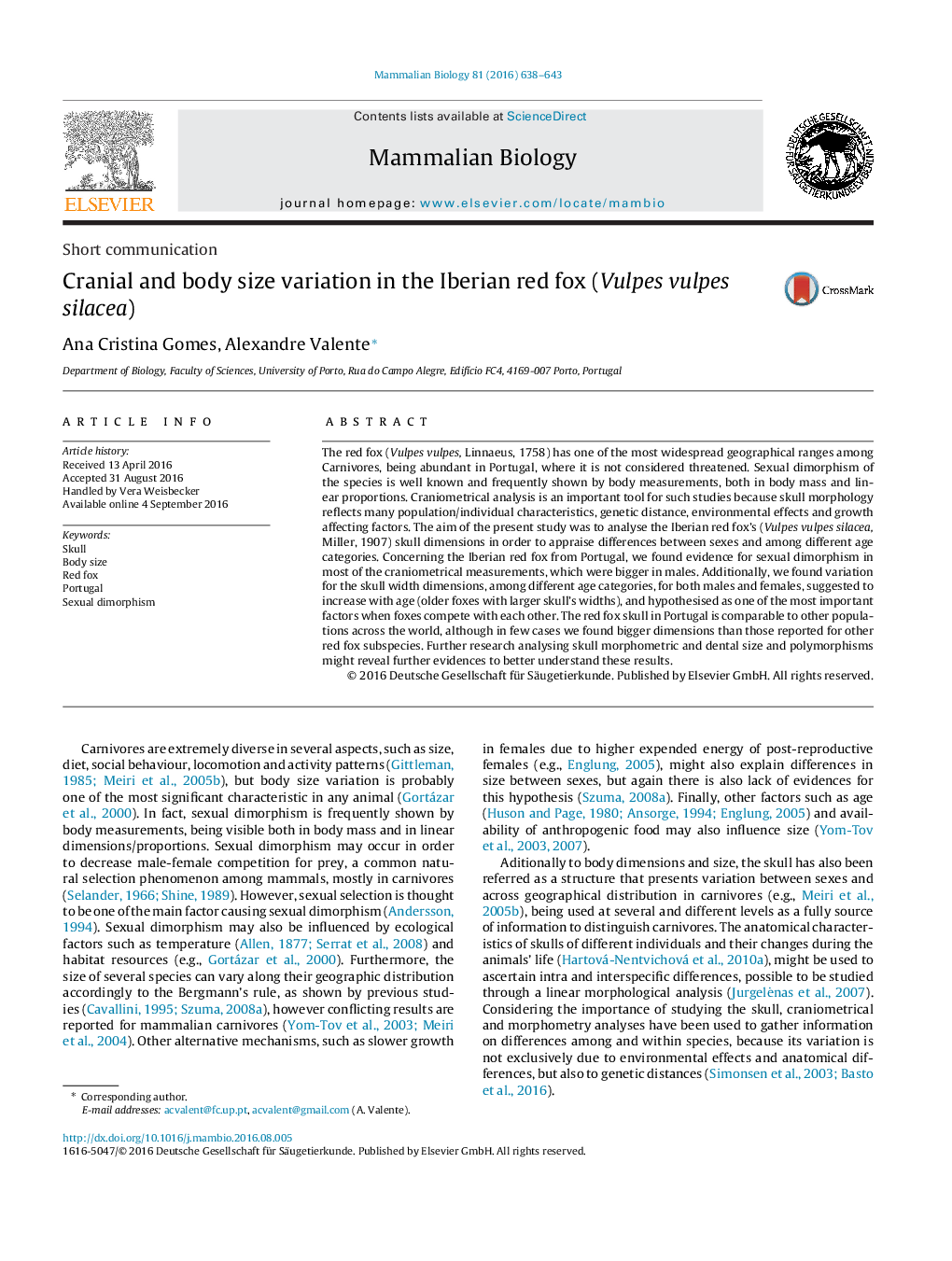| Article ID | Journal | Published Year | Pages | File Type |
|---|---|---|---|---|
| 6481845 | Mammalian Biology - Zeitschrift für Säugetierkunde | 2016 | 6 Pages |
The red fox (Vulpes vulpes, Linnaeus, 1758) has one of the most widespread geographical ranges among Carnivores, being abundant in Portugal, where it is not considered threatened. Sexual dimorphism of the species is well known and frequently shown by body measurements, both in body mass and linear proportions. Craniometrical analysis is an important tool for such studies because skull morphology reflects many population/individual characteristics, genetic distance, environmental effects and growth affecting factors. The aim of the present study was to analyse the Iberian red fox's (Vulpes vulpes silacea, Miller, 1907) skull dimensions in order to appraise differences between sexes and among different age categories. Concerning the Iberian red fox from Portugal, we found evidence for sexual dimorphism in most of the craniometrical measurements, which were bigger in males. Additionally, we found variation for the skull width dimensions, among different age categories, for both males and females, suggested to increase with age (older foxes with larger skull's widths), and hypothesised as one of the most important factors when foxes compete with each other. The red fox skull in Portugal is comparable to other populations across the world, although in few cases we found bigger dimensions than those reported for other red fox subspecies. Further research analysing skull morphometric and dental size and polymorphisms might reveal further evidences to better understand these results.
